Recently I’ve been getting a lot of questions from parents and even young high school athletes surrounding the topic of speed training for youth athletes.
Today I’m delivering with this speed training session I developed for some very talented high school age guys.

However…
I’d like to point out that when it comes to youth training, age matters.
Considering the physical development of youth athletes, adolescents are much different than teens so it’s important that you always develop a good base and progress slowly when training youth.
I break down youth training in this post about the best youth athletic training methods.
If you’re around that age where scouts are starting to check out your game, speed becomes an important quality.
If you want to up your game in any of these:
- Top Speed
- 10yd dash
- Assess speed mechanics
- Develop more power
Keep reading…
Dynamic Warm-Up
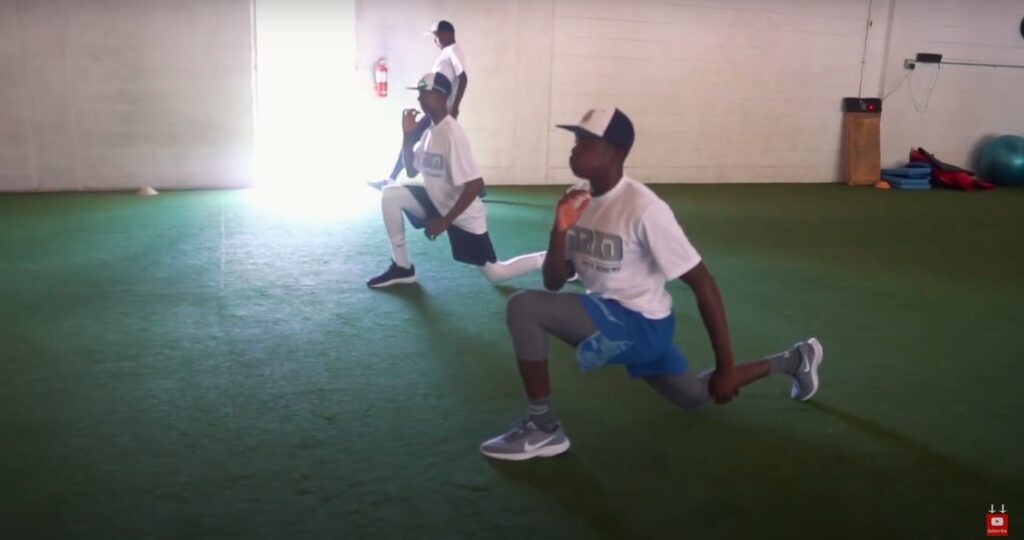
It’s extremely important for youth athletes to get in a good warm-up before starting any workouts. As they continue to grow, ligaments and tendons are more susceptible to injury.
I take all of my athletes through a comprehensive dynamic warm-up routine that encourages good motor patterns and balance.
A few of my favorite drills to start youth athletes with are:
1. High Knee Run
High Knees teaches good running form and builds strength in the hip flexors and lower core. Make sure to use a full arm swing as you practice this one.
2. Walking Lunges
Lunges are one of the best exercises to build strength in the quads, hamstrings, and glutes. This is extremely important for young athletes who are often too weak to develop top speed.
3. Reverse Lunges
Coordination and balance are some essential drills for good running form. Reverse lunges are another great drill to incorporate into a warm-up to get the nervous system prepped.
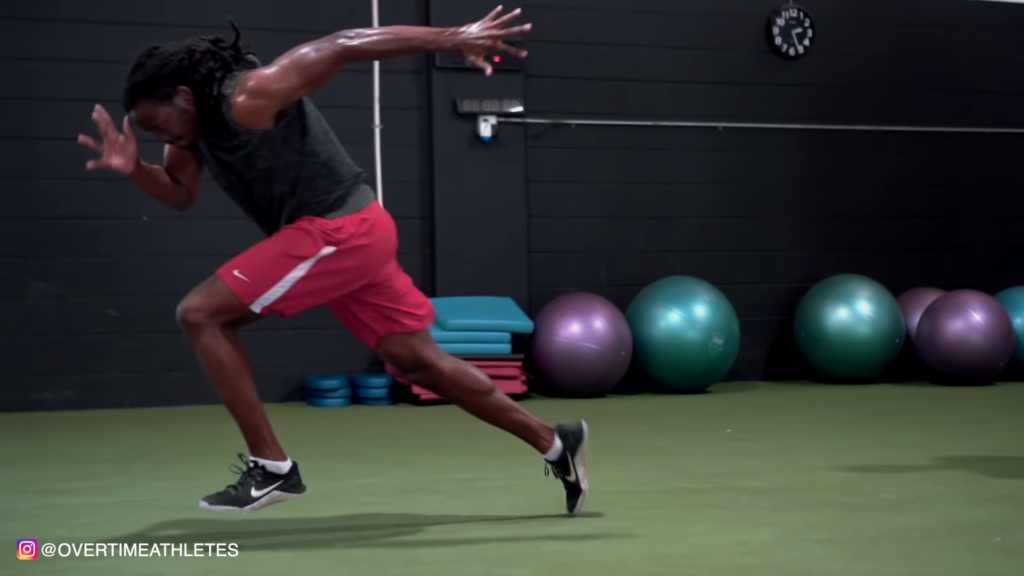
Elements of Good Running Form
Before anything else, I want to address some common mistakes when it comes to speed training for youth athletes.
1. Acceleration
Young athletes often are disconnected in their movement. This results in a lot of head movements and most commonly picking the head up during a start.
Once you pick your head up, your whole body comes up and you slow down.
You always want to keep the chin tucked so that as you accelerate, you remain aerodynamic. Focus on looking at the ground for the first 5 yards.
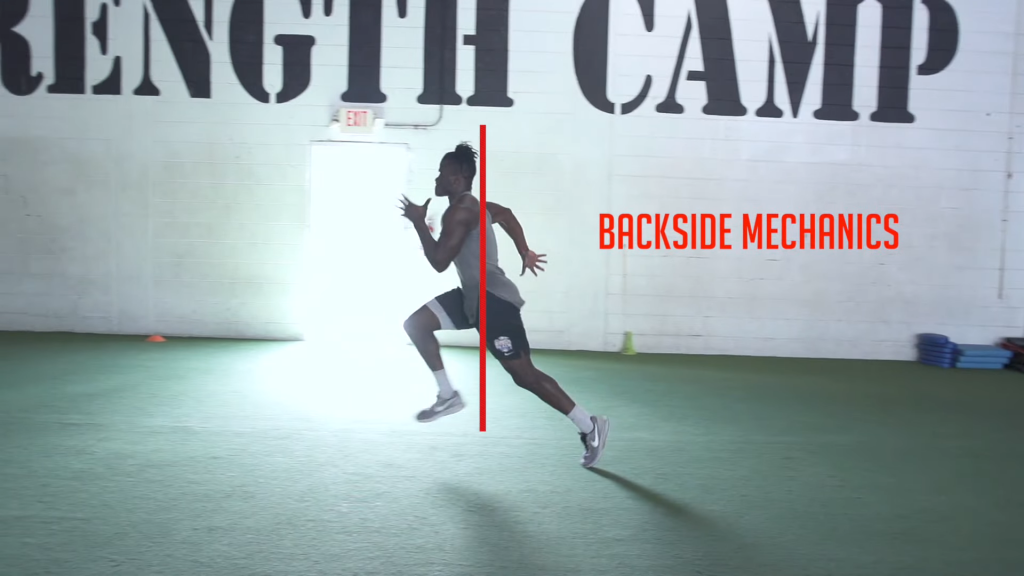
2. Backside Mechanics
A lot of young athletes tend to run leaning forward. This encourages them to have this long, swooping trail leg.
Anyone that runs like this is forced to take much bigger steps in front to cover more ground. To get front point A to point B faster, you want to keep the backside mechanics tight but bringing the heel to the butt and stepping out in front.
This allows you to cover more ground with each step.
To work on these, I’ll have guys balance on one foot and practice cycling one leg through at a time. You want the heel to come up to the butt, then “pedal a bicycle.”
Pay attention to pulling the knee up high enough and having the foot flexed so that the toes pull up to the shin as they strike the ground.
3. Starts
 When practicing starts, you want to keep the hip open, rather than turning and stepping. Starting with the hip open allows you to just take off.
When practicing starts, you want to keep the hip open, rather than turning and stepping. Starting with the hip open allows you to just take off.
For the first 10 yards of acceleration, I like to describe the athlete’s stride as “stabbing into the ground.”
Once you really take off and get into top speed, you can introduce cycling or “pedaling a bicycling.” This is where you’re actually sprinting and you recover your heel all the way up to the butt.
4. Arm Pump
The arm pump is everything when you’re sprinting. If you have a strong arm pump it will make you faster.
Youth athletes typically have a few errors with their arm pump whether it be that they’re too narrow or too wide.
I describe good running form as being like an arrow that’s on a straight trajectory to fly fast. If you have any sort of slight movements to the sides whether your arms are coming across the body or you rock side to side, you’re not being efficient with your running.
A good way to get this across to young athletes is by telling them to reach their hand from their face cheek to their butt cheek or “cheek to cheek.” This will encourage them to create a big enough angle through the arm swing.
The key is that this angle doesn’t change as you run.
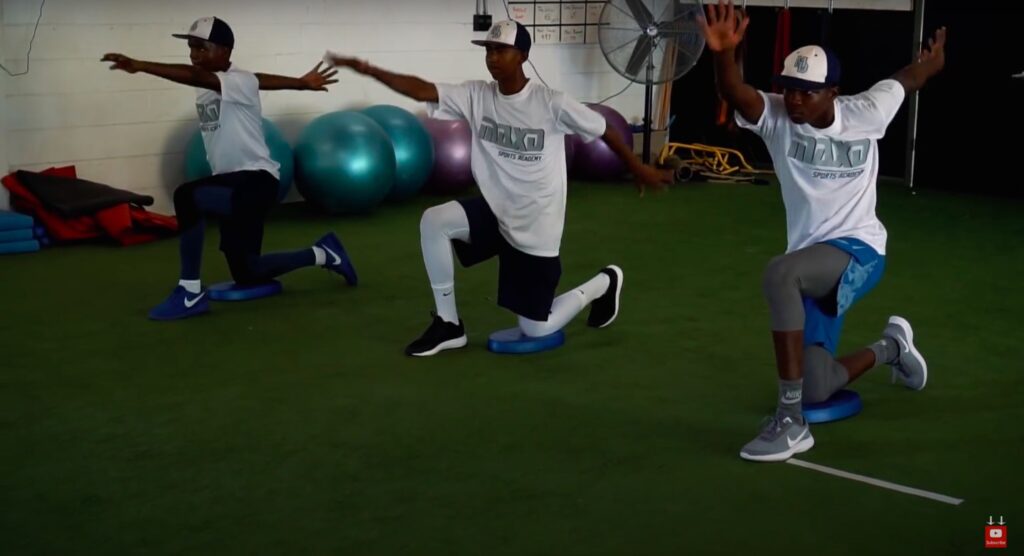
Here’s a great drill to begin practicing proper arm swing mechanics.
- Start kneeling with one foot in front with the arms long to your sides. It’s helpful to have a small pad below your back knee.
- Begin to swing the arms through their full range of motion.
- You’ll gradually take them into sprinter arms, moving fast and bringing the hands “cheek to cheek.”
- If you do this right and with enough power through the arms, you may bounce a bit on that bottom knee.
Youth Performance
Young athletes have so much potential and their future performance can be seriously elevated with the proper training during the ages of middle school and high school.
There’s also a lot of misconceptions and misguided approaches when it comes to overall training as well as speed training for youth athletes.
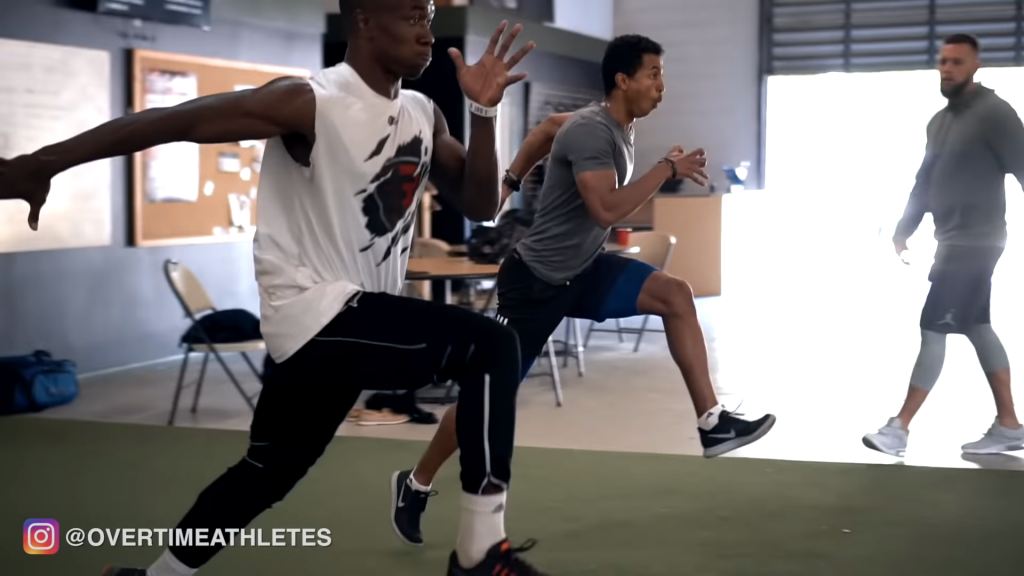
This is why I’ve put together Youth Performance.
A comprehensive athletic performance program which has a focus on the fundamental stages of training youth athletes based on motor skills training, building agility, coordination, and balance.
